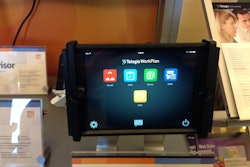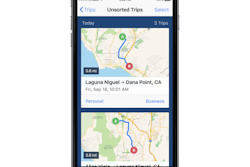Companies with short-haul operations may be losing at least 30 minutes of productive time, per driver, every day. A new feature of an electronic logging application aims to help recapture that time and put it to good use.
The hours-of-service rule contains an exemption for drivers that stay within a 100 air-mile radius of their home terminal. These drivers do not have to keep a full record of duty status, as spelled out in Section 395.8. They can therefore ignore the requirement to log a 30-minute break within their first eight hours of coming on duty.
“Most businesses do not take advantage of this exemption because there is a risk,” said Newth Morris, one of the founders of Telogis during the annual Telogis Latitude conference, on Oct. 28 in Dana Point, Calif. “If a driver inadvertently breeches this radius and gets pulled over, the company gets fines and penalties.”
Drivers that normally stay within a 100-mile radius may cross that boundary on any given day as their orders, volumes and routes change. To keep logbooks compliant but use the exemption, where possible, to maximize productivity can be a complex logistics problem.
During the conference, Morris introduced a new feature in Telogis’ suite of cloud-based routing and compliance applications that continuously records a “ghost log” of all events, he said. When a driver breaches a 100-mile radius, the app automatically updates the electronic logbook in the vehicle and in the back office.
If the driver does not cross the boundary within the first eight hours of coming on duty, the driver will not be prompted to take a 30-minute break.
One of Telogis’ customers, Sysco Corporation, estimates that 25 percent of its fleet could benefit by using the 100 air-mile exemption to avoid the 30-minute break rule. With a fleet of 10,000 trucks, the food service provider stands to recapture 1,750 productive driving hours every day, Morris said.










